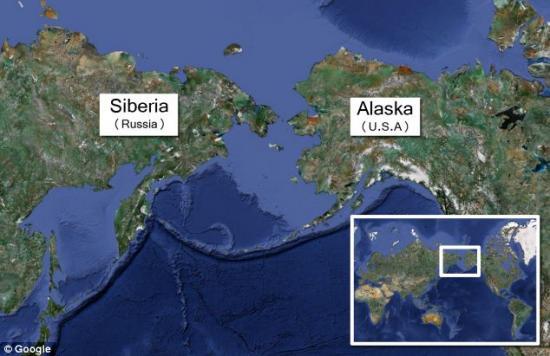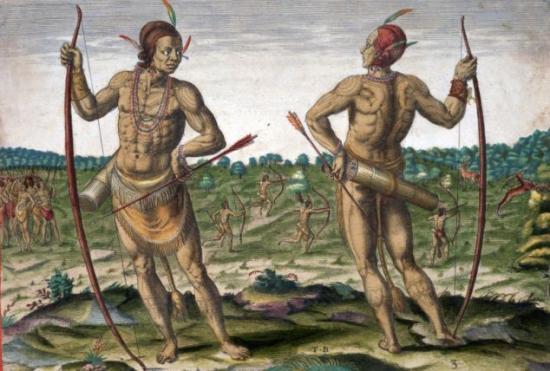North America was populated by no more than 70 people 14,000 years ago, claims stunning new DNA research
Source - http://www.dailymail.co.uk/news/article-1385290/North-America-populated-70-people-claims-stunning-new-DNA-research.html
The next time you're having a disagreement with a work colleague or annoying neighbour, bear this in mind: Chances are you're related.
A new study of DNA patterns throughout the world suggests that North America was originally populated by no more than 70 people.
Most experts agree that, around 14,000 years ago, a group of humans crossed the land bridge that connected what is now Siberia in Russia with Alaska.

Crossing over: Most experts agree that, at some point between 12,000 and 14,000 years ago, people from Asia moved over to North America. A new study of genetics puts the number of New World travellers at 70
But new research has shown just how small that group was, venturing into a vast continent from Asia during the last Ice Age.
Up to now DNA analyses of the intrepid and original 'founding fathers' looked at a particular gene, using estimates and academic assumptions on constant population sizes over time.
The new study, by Professor Jody Hey, came at the subject from a different angle - looking at nine genomic regions to account for variations in single genes, and assuming that sizes of founding populations changed over time.

Compare and contrast: Professor Jody Hey compared the DNA sequences collected from Native Americans and Siberian natives, providing a ' detailed portrait of historical populations'
Professor Hey, of Rutgers University, was quoted in Live Science as saying his method favoured 'actual genetic data over estimates used in previous calculations'.
He said: 'The estimated effective size of the founding population for the New World is about 70 individuals.'
Archeological evidence supports his calculation that the initial settlement of North America occurred between 12,000 and 14,000 years ago.
He said: 'The beauty of the new methodology is that it uses actual DNA sequences collected from Asian peoples and Native Americans, an approach that can provide a detailed portrait of historical populations.

Population growth: A 16th century engraving suggests a large population of Native Americans. Estimates vary greatly from a population of one million to 18 million
Professor Hey said he focused on the genetics of people who spoke Amerind.
It is one of three main language groups in North America and is indicative of the earliest migrants who went on to populate the Americas.
Professor Hey's study is among a series of new findings that are challenging long-held views about the history and growth of the Americas, as advances in technologies such as DNA testing open new doorways to the past.
In March, a team of archaeologists near Austin, Texas, found evidence of stone tools possibly dating back 15,000 yearsm, smashing long-held theories about native settlement.
The treasure trove of 15,528 artifacts, including chipping debris from working stones and 56 tools - such as blades, scrapers and choppers - was found at Buttermilk Creek.
Lead archaeologist Michael Waters, of Texas A&M University, described it as like finding 'like finding the Holy Grail', adding: ‘This is almost like a baseball bat to the side of the head of the archaeological community.'
The accepted wisdom among archaeologists is that the first people to colonise America were called the Clovis,
Sometimes also referred to as the Llanos, the Clovis were a prehistoric race who first appeared in North America at the end of the last glacial period 13,500 to 13,000 years ago.
They are so named because of the discovery of their distinctive 'Clovis point' hunting tools in the 1930s at Clovis, New Mexico.
Archaeologists came to the conclusion that the Clovis were the first to inhabit North America because no evidence of an earlier civilisation had been found.
Several theories exist about their eventual decline and disappearance. The most common-held belief is that the Clovis culture merely adapted across America and eventually morphed into other cultures (such as the Folsom culture).
Another, more controversial theory, believes that their over-hunting of 'megafauna', like the mammoth, contributed to their extinction.
Another, known as the Clovis Comet event, suggests an extraterrestrial impact led to mass extinction and climate change that abruptly wiped out the Clovis.